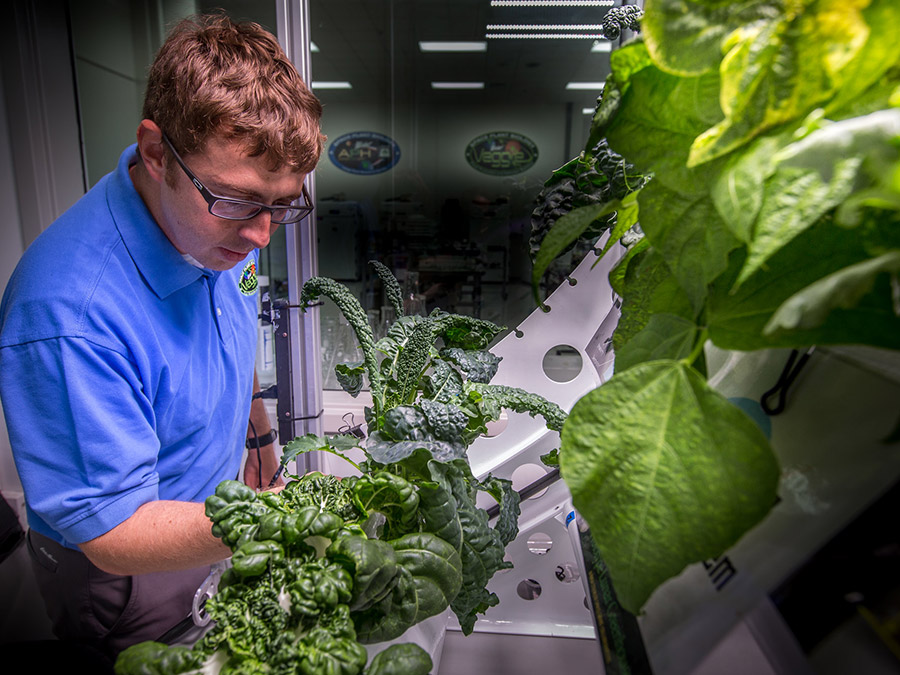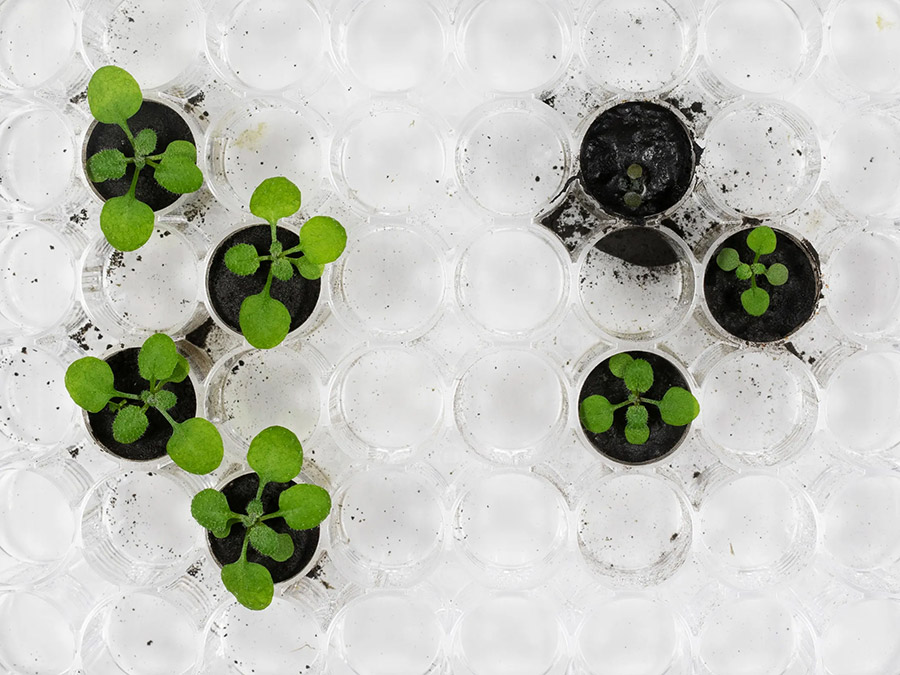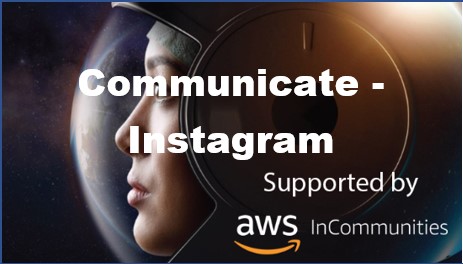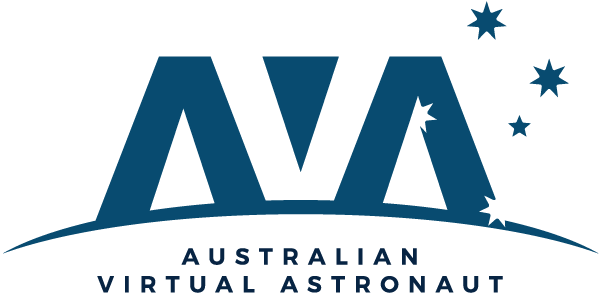Australian Virtual Astronaut Challenge
Mission 9 | Communicate
Share your solution
Communicate and share design solutions to key stakeholders.
Register for the 2024 challenge here

Introduction
What is “Communicate”?
This stage of the iSTEM engineering design process requires students to unveil their solution. How will they best communicate the functions of the solution? In which medium will the communication take place? What are the key messages?
Use the lesson below to commence solving one of the following scenarios
- Earth Observation
- Robotics
- Home on the Moon
- Growing food in space
- AI in Space
Mission Brief
Key Questions for Students to consider
- Have all key stakeholders been informed throughout?
- Who needs to see the solution(s)?
- How can you best share or pitch the solution?
- What enterprise and entrepreneurial skills are required to successfully market the solution?
- What are the results of product and market testing?
- Would the solution benefit a broader market? How could you reach this market
Possible Activities
- Document all aspects of the engineering design process.
- Pitch the solution.
- Communicate evidence-based results to justify design decisions.
- Communicate to key stakeholders using presentations, reports, and drawings.
- Develop a communications and marketing plan
Suggested Learning Sequence – Mission 9
Our expert curriculum designers have developed a suggested Mission 9 learning sequence for teachers. The following is for the full set of AVA resources, however, teachers are encouraged to only use activities that are most suitable for their own class and school setting.
Sub Mission 1: Setting the Scene Watch the introductory video for Mission 9.
Sub Mission 2: Communication and Collaboration Watch Communication and the ‘Challenge of Collaboration‘ video by Carey Furze.
Sub Mission 3: Communicate Provide students with this worksheet and get them to produce a final dimensioned orthogonal drawing. Students may wish to watch video tutorials from Glenny D.
Sub Mission 4: Pitching Provide students with ‘Pitching your Solution’ worksheets. Get students to watch ‘Pitching with Dr Scott Sleap‘ video. Using the second worksheet, get students to storyboard a pitch deck for their 90-second presentation.
Sub Mission 5: Communication – Instagram Provide students with this worksheet and discuss.
Sub Mission 6: Communication – Podcasting Provide students with this worksheet and discuss.
Sub Mission 7: The Future, Space Taco’s and Artemis Watch an inspirational video about the future, space taco’s and the Artemis program presented by Lori Waters and Ted Tagami from Magnitude.io.
Sub Mission 8: Scenarios Get students to watch the selected videos from their selected scenario to provide additional context for their project.






Downloadable Resources


Communication
In this worksheet students learn about communication and produce a final concept drawing.



Communication – Pitching
In this worksheet students learn about pitching their concepts and making a pitch deck.


Communication – Instagram
In this worksheet students learn how to create and the tools required to create Instagram videos.



Communication – Instagram
In this worksheet students learn how to create and the tools required to create a podcast.
All Scenarios – Resources
General background information for teachers and students to support challenge activities
Storytelling with Data
In this informative video, Scott Berinato (Harvard Business Review) takes you through how to create a story out of your data that compels audiences. 3 steps; Setup, conflict, resolution. (4:46 minutes)
Communication and the Challenge of Collaboration
How to communicate & collaborate across your team is an essential question that faces all organisations. Cary Furze from eBookform discusses how to be effective in a team when collaborating and in presenting your messages for audiences (4:46 minutes).
Pitching with Dr Scott Sleap
Just how do your fro coherent messages when you are forming a pitch? What are the essential ingredients? Does language, tone and posture matter? Dr Scott Sleap from STEM Industry School Partnerships discusses best practices in pitching concepts to a variety of audiences (4:46 minutes).
Communicating solutions with AWS Aerospace & Satellite Solutions
How to communicate to stakeholders about an AI landing a rocket on the moon
The Future, Space Taco’s and Artemis
From developing new sustainable techniques in agriculture to obtaining the materials needed to create the resources we need in deep space, there are many avenues that Artemis 1 and beyond will unlock. Lori Waters from Magnitude.io discusses just some aspects of the near future (9:29 minutes).
Space Inclusion with Dwayne Fernandes
AstoAccess Flight 2 Ambassador Dwayne Fernandes describes the work being done to make space inclusive for people with disabilities (12:37 minutes).
Space Law with Azimuth Advisory
Principal Donna Lawler from Azimuth Advisory describes the legal landscape when it comes to putting spacecraft in space (16:27 minutes).
Scenario 1: Earth Observations
An explainer video on Earth observation
Communicating your message is essential when pitching. An explainer video simplifies your message considerably without losing meaning. This video by CSIRO aims to demystify how Earth Observation works (1:34 minutes).
Satellites keeping an eye on mining and agriculture
CSIRO is helping scientists improve the accuracy of Earth observation satellites that provide valuable data to our mining and agricultural industries through the use of robots on salt lakes (4:37 minutes)
Scenario 2: Robotics
Closing date for submissions: Semester 1- Friday 28 June 2024; Semester 2 – To be confirmed
Download the mission brief
AROSE – Communications
AROSE – Australian Remote Operations for Space and Earth consortium works to leverage existing remote operations expertise in the Australian resource sector and catalyse knowledge transfer between terrestrial and off-Earth domains. Newton Campbell, Director – Space Programs speaks with Ben Newsome from Fizzics Education on communications. (6:55 Minutes)
How are robots used in space?
Robotics in space can be complex, however the messaging around what they do in space need not be. ESA robotics engineer Martin Azkarate discusses some of the upcoming missions involving robots and the unique science they will perform, keeping the language simple and inviting (5:59 minutes)
Scenario 3: Home on the Moon
Home on the moon and the Aldrin Cycler
Imagine a system where a continual cycle of spacecraft between the Earth & Moon in a cycle assisted by gravity allowed for cheaper transport of materials. Jim Christensen from the Aldrin Family Foundation discusses the Aldrin Cycler, a concept that could help solve the energy costs of future space missions (7:59 minutes)
Is living on the moon possible?
In this lesson by Alex Gendler, with animation by Allen Laseter, we explore how we might live on the Moon based on ideas envisaged by the European Space Agency. The communication of the message is clear and compelling without losing meaning from the overall vision of ESA (4:51 minutes).
Scenario 4: Growing plants in space
Clinostats simulating microgravity on Earth
A clinostat helps scientists simulate microgravity on Earth by constantly changing the axis of a medium so that ‘up’ keeps changing. Gil Cauthorn, a PhD student from UND & Lori Waters and Ted Tagami from Magnitude discuss the technology, with Ian Preston from NSW Virtual STEM Academy showing how to make one from robots in schools (14:02 minutes).
How do plants grow in zero gravity?
Communicating how plants grow in space need not be complex. In this video by the National Space Center in the UK, Daisy Dobrijevic takes us through what happens to different parts of plants when in microgravity. With accessible language, she describes how this research is beginning to significantly influence our lives back on Earth (3:08 minutes).
Scenario 5: AI in space
AI and Asteroid Defense | Intel® AI Interplanetary Show | Intel Software
Bill Nye and Robert Picardo discuss how space agencies are using AI to predict the trajectories of asteroids (3:08 minutes).
Machine learning – Communicating the solution
Dr Sara Webb, Astrophysicist, Swinburne University of Technology talks about how she communicates machine learning solutions (2:44 Minutes)
The Role of AI and Machine Learning in Mechanical Engineering
Allen Robinson from Carnegie Mellon University and several other faculty members discuss AI for engineering (4:04 minutes).
Scenario 6: Telecommunications in space
NASA | The Data Downpour
Learn how the GPM constellation turns observed radiances and reflectivities of global precipitation into data products (3:08 minutes).
Artemis I Communications Profile
Covers how NASA’s Deep Space Network and Near Space Network is empowering the Artemis missions (2:03 Minutes)
Australian Virtual Astronaut Challenge
Due Date for Submission
September 23 at 11:59pm AEDT
Poster or 90-second video
Conclusion – December 1
A number of Year 9 & 10 teams will be selected for to pitch their ideas to renowned space industry representatives and venture capitalists. This will occur at the Australia Youth Space Forum, supported by the Australian Space Agency, Lockheed Martin (US), The Space Research Hub & the SISP program.



